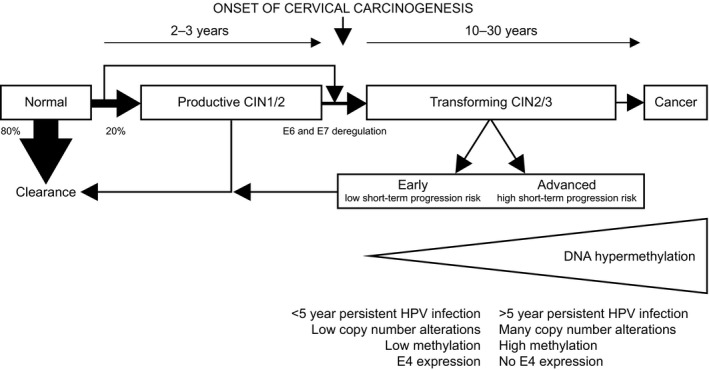Figure 1.

Schematic representation of the various outcomes of hrHPV infection of cervical epithelial cells and characteristics of early versus advanced transforming lesions. Most hrHPV infections are cleared by an effective immune response without causing cellular abnormalities (transient infections). Productive infections can give rise to productive cervical intraepithelial neoplasia (CIN, mainly CIN1 and a subset of CIN2), of which the majority regresses spontaneously within 1 or 2 years. Transforming infections are characterised by deregulated E6 and E7 expression and are associated with transforming CIN (the remaining subset of CIN2 and CIN3). Transforming CIN is a heterogeneous disease with variable duration of lesion existence and includes both progressive and regressive lesions. On routine haematoxylin & eosin‐stained sections these lesions cannot be distinguished. Current data support the division of transforming CIN lesions into early transforming lesions, characterised by a <5 year preceding HPV infection, few copy number alterations, low methylation levels and E4 expression and advanced transforming lesions, characterised by a ≥5 year preceding HPV infection, cancer‐like copy number alterations, high methylation levels and no E4 expression. As increases in genetic and epigenetic alterations are associated with disease progression, early transforming lesions are thought to have a low short‐term progression risk to cervical cancer, whereas advanced transforming lesions are thought to have a high short‐term progression risk. 8 , 47 , 50
